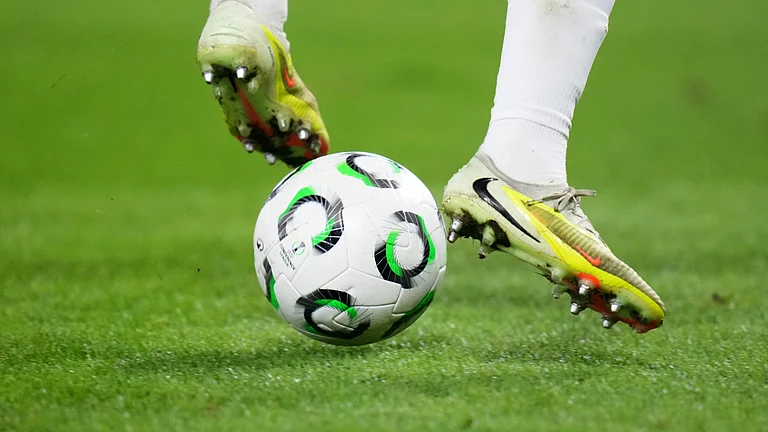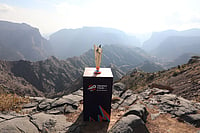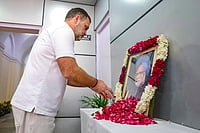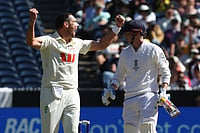Every region and language in India carries multiple layers of socio-cultural and art histories whose warps and woofs reveal entangled lineages and plural traditions. In the case of epics like the Ramayan and Mahabharat, it is all the more so, as they have been read, heard, seen, told, sung, written and enacted in different languages, contexts and styles in different ways. Noted literary critic and pioneer in Bhasha (vernacular languages) research G.N. Devy is of the opinion that every epic is peculiar in the cultural and literary functions it draws up for itself.
If one looks at the oral traditions of the Ramayan and Mahabharat in Malayalam, one can see continuities—as they were orally conveyed, enacted and performed in many forms, folk and classical, some of them assuming the written form in later periods. Both epics have had immense impact and presence in Kerala’s cultural legacy which includes oral renditions, literature, classical and folk performing arts and other visual forms like murals, painting, sculpture, theatre, film and so on. In Mayyil, a village in northern Kerala, the prime deity of the temple is Ganesha in the form of the scribe; from southern Kerala, a pictorial representation of the Ramayan called Chitraramayana was discovered in the form of palm leaf pictures and texts. Likewise, several murals, sculptures and relief work in stone and wood that depict scenes from the Ramayana are also found in Kerala temples.
From early times, textual and oral narratives existed side by side, both influencing and feeding each other. Oral narratives are integrated into the epic with ‘local’ flavours of culture, customs, manners, linguistic expressions, geographical details and even caste hierarchy finding a place in several versions of the epics. The Kerala tradition of retelling epics is mainly based on written, oral, visual, theatrical and ritualistic modes of expression.
Also Read: Book Excerpt: Ravana Leela
Milestones in Malayalam literature
The earliest known Malayalam poetry, Ramacharitham by Cheeraman (12th century), is a mixture of Tamil and Malayalam deploying rhyming, metre and words. This work shows the influence of Kamparamayana, the Tamil version of the epic. Next comes Ramakathappaattu by Ayyippilla Asan of the 14th century, which is a linguistic mixture of Tamil, Malayalam and Sanskrit. Usually sung to the accompaniment of the musical instrument, Chandravalayam mostly deals with Yuddhakanda of the Ramayan. Asan also composed Bharatam pattu, the first Mahabharata-related literary work in Malayalam. Then, we have Ramayana and Mahabharata adaptations by Kannassa Ramappanikkar and Vellankalloor Sankarappanikkar written in the 15th century. The first summary of Mahabharata in Malayalam was by Kannassa Ramappanikkar named Bharatamala, followed by Adhyatmaramayanam and Mahabharatam by Thunchathu Ezhuthachan, who is considered the father of Malayalam, which falls under the literary category of Kilippattu. Eminent historian, MGS Narayanan in his work, Perumals of Kerala, mentions Mavaratapattanmar or Mahabharata scholars who were employed in Kerala temples, for reading and interpreting Mahabharata to the public during the 9–12th centuries CE. Thus there have been several categories of adaptations of epics in Malayalam literature, and their oral transmissions were generally based on texts for musical renderings, oral narratives and other performances.
The oral/folk versions of songs are narratives that are more or less independent of acknowledged texts as they consist of improvisations and deviations from the epic. As most of the literary forms of pattu tried to summarise the epics as a whole, folk versions concentrated on specific contexts or instances from the epics.
Mavaratham pattu, for instance, was sung in southern Kerala or Travancore from very early times. The storyline relates to two provinces called Karunad and Kurunad. The queen of Karunad is Kanthari. The Queen of Kurunad is Kunchuthevi, who has five sons and the youngest of them is Kunchupeema or Bhimasena. In this story, Duryodhana decides to perform sorcery in the form of nizhalkkuthu (shadow piercing) to kill the Pandavas. Scholars mention different versions of Mavaratam pattu with different endings.
Another oral tradition, the Bheeman katha recounts the killing of Hidimba and Baka by Bheeman, while another form, Bharatam poru describes in detail the story of the Great War.
In the Vanchippattu (Boat-song) form songs are usually sung by men as they row boats, with their tune and rhythm in conformity with it. Lakshmanopadesam is an example of the Ramayan-related theme written and sung in this format. The list of such oral traditions of songs is endless.
Also Read: राम पर प्रचलित लोकगीत व लोकोक्तियाँ
Performance traditions
The literary corpus of the performing arts comprises texts, scripts and oral narratives on which performance is based. The relationship between the written and the oral texts is determined by the modes and contexts of performance.
Koodiyattam, the oldest living Sanskrit theatre in the world, is a highly stylised form where the enactment is done through mudras (gestures) and subtle bhavas (expressions), along with dialogues. Sanskrit, Prakrit and Malayalam are used in it. Many plays written by Bhasa, one of the earliest playwrights in Sanskrit, based on various stories from Mahabharata form the textual basis for Koodiyattam. Pancharatram, Urubhamgam, Dootavakyam, Dutaghatolkacham, Madhyamavyayogam and Karnabharam are some examples. Theatrical aspects of the stories of Mahabharata are given more emphasis in Koodiyattam. Stories from the Ramayana performed in Koodiyattam are Asokavanikankam, Abhishekanatakam and so on. Bhasa in many plays offers alternative readings of Mahabharata to create theatrical situations and emphasise dramatic aspects.
A path-breaking performance of Koodiyattam in modern times is the enactment of panchakanyas, Ahalya, Draupadi, Sita, Tara and Mandodari on stage by Usha Nangyar, the acclaimed Koodiyattam performer. Through this innovative enactment, Nangyar incorporates contemporary ideas and feminist concerns into Koodiyattam performance.
In Chakyar koothu, Sanskrit shlokas are recited and then interpreted in Malayalam, weaving into it contemporary contexts and situations. Here, the performer of Koothu has the right to question/criticize/mock even the king at the time of the performance. Accordingly, epic situations are often interpreted and narrated to critique the social system and to ‘speak back to power’. Many prabandhas (biographical narratives) written by Melputhur Narayanabhatta in 16th century are based on the Ramayana and Mahabharata and include Rajasuya, Dutavakya, Panchaliswayamvara, Subhadraharana, and Niranunasikaprabandha. Both Koodiyattam and Chakyar koothu are traditionally performed inside the temple.
Kunchan Nampyar (16th century) composed poetic works based on both Mahabharata and Ramayan stories for the performance of thullal, a form of ballet performed with musical rendering in swift rhythm. There are three types of thullal — Ottan, Parayan and Sitankan. The emphasis is on satire and social criticism. Themes and stories suitable for narrative performance are adapted from the Mahabharata and Ramayana in all the three types of thullal. Some popular stories are Kalyanasaugandhikam, Kichakavadham, Sabhapravesam and Kumbhakarnavadham. The language used in thullal literature is pachamalayalam or pure Malayalam. Even though this is a temple art, it is also performed outside the temple.
Written texts along with improvised singing and miming gestures in stylised format form the structure of Kathakali, the dance drama of Kerala. The literary text of Kathakali is called Attakkatha. Kalyanasaugandhikam, Kirmiravadham, Nalacharitham, Panchaliswayamvaram, Kichakavadham, and Utharaswayamvaram are some of the popular stories performed in Kathakali. One peculiar characteristic of Kathakali is that counter heroes like Duryodhana and Dussasana get central importance in many plays.
Teyyam is a ritualistic performative dance form of northern Kerala enacted along with musical text and instrumental accompaniment. It is a ritual mode of worshipping ancestors and local folk deities through performers. In Bali theyyam, the Ramayana character Bali is worshipped as a heroic warrior who is tragically killed and later elevated to the status of God. In Bali Teyyam, Bali is socially and geographically localized and is the prime deity (kuladaivam) of the artisan community who are priests of this ritual.
Krshnanattam is a temple art form enacting the life story of Krishna. The text of this performance is Krsnagiti written by King Manaveda (17th century) in Sanskrit. The story of Krishna, beginning from incarnation to swargarohana (ascent to the heaven) is narrated in eight parts. The text and performance of Krshnanattam include certain portions in performance which are absent in the written text. The enactment of Satyabhama fighting with Narakasura included in Banayuddha portion is an example.
Apart from these traditions of performance, there are many other forms like Patayani, Ivarkali, Arjunanritham, Sitakkali, etc. through which Mahabharata and Ramayana stories have been enacted.
The art of Kathaprasamgam, an oral form of storytelling mixed with songs, was developed in modern times and used many stories from epics and attracted huge public participation; for instance, the story of Karna was a very popular narrative. The epic tradition continues in modern-day theatre and cinema in various forms, not only as direct adaptations but also as subtexts.
Nizhalkkuthu
Also Read: Who Is Ram? What A VHP Worker, A Shiv Sena Cadre, A Buddhist Priest And A Tribal Woman Said
A particular episode that deals with abhichara (sorcery) act of Nizhalkkuthu or shadow piercing, which is unique to Kerala, is a local addition or embellishment to the epic that is not found in the original Sanskrit text of the Mahabharata. According to this story, Nizhalkkuthu or piercing in shadow by a sorcerer can kill an enemy. Persuaded by the Kauravas, a Malaya tribesman kills Pandavas by shadow-piercing, and later his wife brings them back to life by performing the counter act. This episode is found in four different renderings of Mahabharata in Kerala: it appears in Kurathi thottam, a theyyam performance in North Kerala, in Mavaratam pattu from South Kerala, in a ritual called Pallippana sung in Sri Krishna temple in Ampalappuzha in Central Kerala and as an Attakkatha for Kathakali performance.
Tholppavakkoothu or shadow leather puppet theatre still performed in Central Kerala is another instance of oral transmission of epics. It is a visual theatrical performance–very much a prototype of cinema—that adapts the written text in non-textual ways, by integrating dance, song and storytelling, image, sound and movement. The adaptation of the Ramayana written in Tamil by Kampar, who lived between 9–12th century, forms the basis of this puppet theatre. The puppet play is held overnight and continues for eight nights, 21 nights or 60 nights. The performers use a language which is a mixture of Tamil, Malayalam and Sanskrit, another instance of continuity between classical text and oral performance. In his seminal work, Oral Epics in India, Stuart Blackburn points out that the adaptation in Kerala shadow puppet play occurs in five primary forms: local legends, ritual frame, performance frame, commentary and actual recitation.
Wayanad versions of Ramayan
Researchers have brought to light the prevalence of various oral traditions of Ramayana existing in Wayanad in northern Kerala. These versions draw from local legends and beliefs in which the incidents of Ramayana take place. Interestingly, even within Wayanad, there are different versions of Ramayan that vary in terms of their theme, narrative styles, etc.
Mappila Ramayanam is the Ramayana version prevalent among the Muslims of Vatakara region in North Kerala. It is composed of mappilappattu, the musical form typical of Muslim cultural legacy of Kerala. The milieu of Kerala Muslim life has been set as the background of Mappila Ramayanam. The language and pronunciation are also typical of Kerala Muslim culture. The storyline is not very different from that of the Valmiki Ramayan. The reflection of Muslim life is brought into the narrative on the basis of specific instances, names and terms.
Oral traditions of epics express many subtle aspects not stated in written versions. Sometimes, they even question the objectivity and reasoning contained in written texts. In some cases, oral versions discard the divine aspects of heroes with which they are presented in written texts and represent them as human beings who reside along with the community of people. These oral traditions link with classical traditions and texts while sustaining and integrating the rituals, myths, legends and cultural memories and expressions of local communities. Oral traditions of the Ramayana and Mahabharata act as a link between different textual and religious traditions and beliefs and celebrate the polysemy of texts through local interpretations and improvisations.
(K. Muthulekshmi is Pro Vice-Chancellor, Sree Sankaracharya University of Sanskrit, Kalady, Kerala)





















